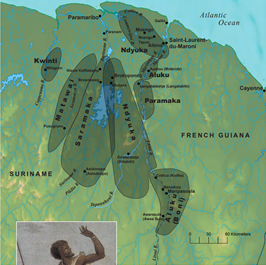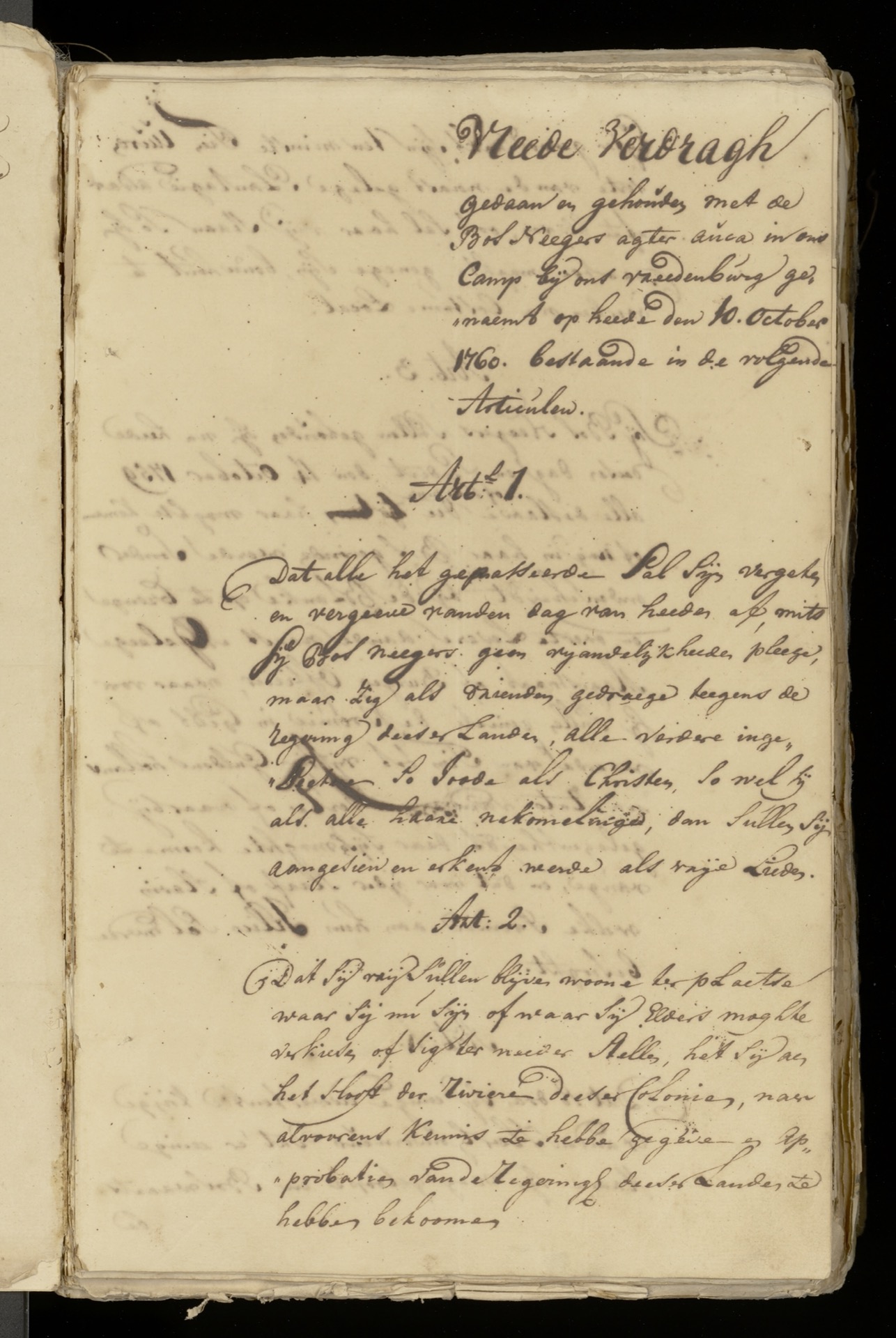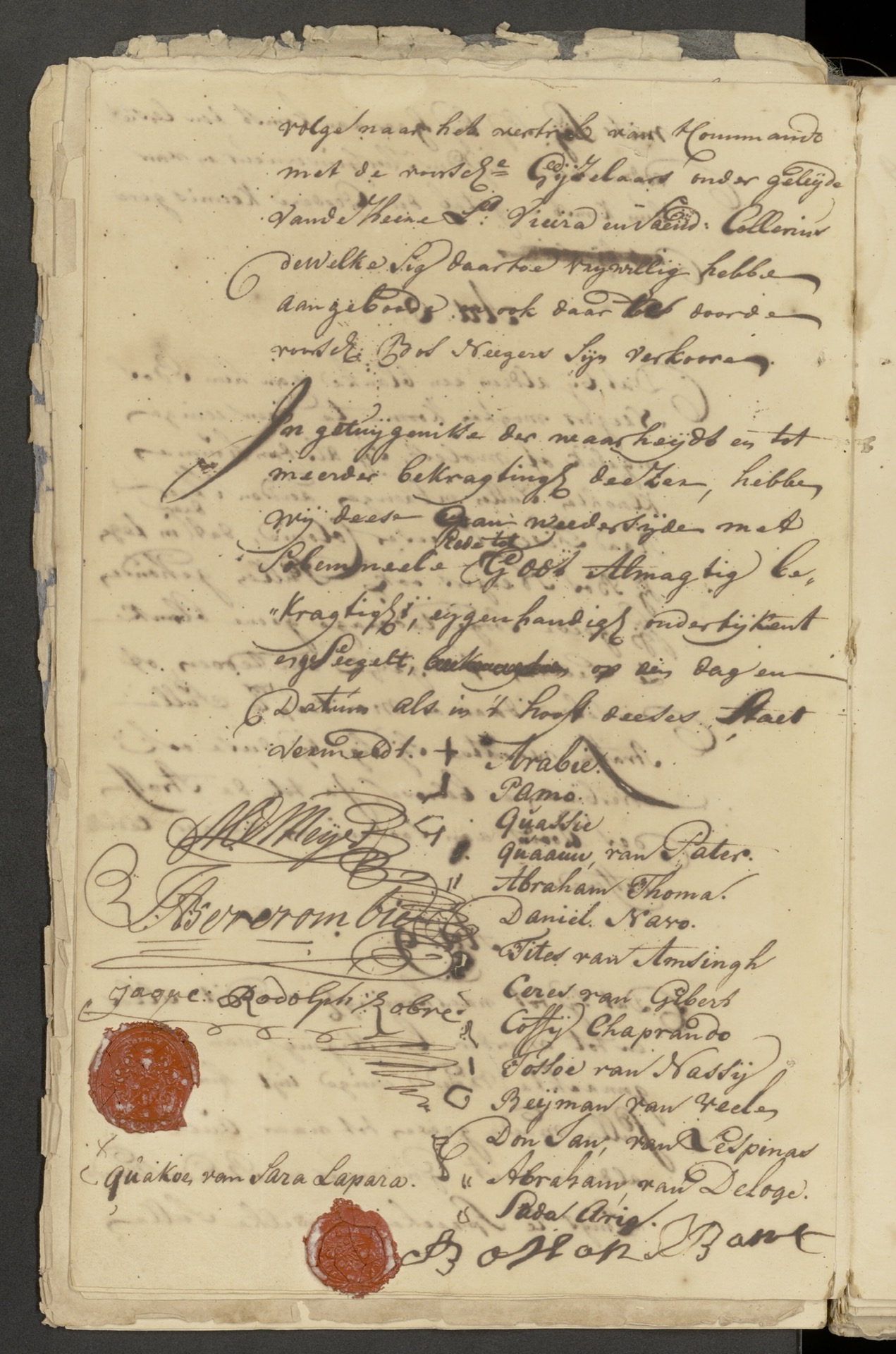More about Maroons
Picture: Maroon on the bank of a river, lithograph by Pierre Jacques Benoit (1782-1854) in the book Voyage à Surinam (1839)
About Maroons


Maroons are enslaved Africans who fled the plantations. Deep in the rainforest they managed to survive and build a new existence. The great knowledge of nature that they brought with them from Africa proved essential. The Maroons have always lived in harmony with the indigenous population.
Maroonage occurred wherever slavery existed in the Americas. In most of the former colonies, the Maroons have been absorbed into society. Only in Suriname and the border region of French Guiana do Maroons still form a separate group with a recognizable culture of their own. Six Maroon population groups live in Suriname: the Ndyuka or Aukaners, the Saramaka, Pamaka, Matawai, Kwinti and Aluku. They each have their own culture but there are also many similarities.
Peace Treaty
On October 10, 1760, the Ndyuka were the first to sign a peace treaty with the Dutch colonial ruler. This recognized them as free men and women. They could settle wherever they wanted as long as it was at least 10 hours away from the plantations and the colonial rulers knew where they lived. Also the type of trade that was allowed was determined: wood, cattle and goods. In 1762 the Saramacca people also concluded a treaty with the colonial ruler and in 1767 the Matawai followed suit. This recognized the various communities as politically and culturally independent by the Dutch colonial ruler. They still have their own autonomous government within the Surinamese state.
What is special about the treaty of 1760 is that the Aukaners were able to fight for freedom more than 100 years before the abolition of slavery. On October 10, several Maroon communities celebrate this special moment annually: the Day of the Maroons. It was only on 1 July 1863 that the Netherlands abolished slavery in Suriname and the Caribbean. The enslaved had to continue working on the plantations for another 10 years at a poor wage.


The first and last page of the peace treaty with the Aukan/Ndyuka Maroons, 10 October 1760
National Archives, The Hague
